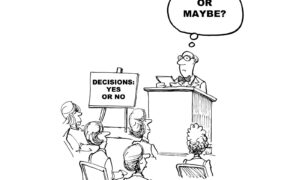Most products are simply commodities to customers. If it solves their needs, there is no difference between one company over another.
As such, the key to getting the sale is to provide the best total customer experience. This will not only increase company revenue, but also add profit to your business as well. By auditing the various customer experiences within your business, you can learn how to improve the ways your business interacts with its customers. An audit will also give you valuable insight into your sales, inventory, vendors and customers.

Brand Awareness
What do customers think of when they hear your brand name? A brand separates your company from its competitors and sets customer expectations before they even enter the store. It’s what your prospects and customers think and feel when they come in contact with your business.
A company can’t be everything to all people. When it comes time to buy, what will customers remember about your business? What will they like and dislike?
As an exercise, complete the following sentence: “My company helps ____ who are ____.” For the first blank, fill in your perfect customer. Narrow this down as much as possible. In the second blank, fill in the specific problem your company solves.
Audit this by surveying current customers. Ask a few short questions: 1. How would you describe the company in one word? 2. Why did you choose to buy from us?
For more tips on understanding your customer base and how to reach them, see our article on finding your target market.
Search-Ability
How easy is it to find your business’ website? And if a customer can find it, is it easy to navigate and make a purchase?
In addition to online search-ability and responsive design, is your physical location easy to find on Google Maps, Apple Maps and Waze? Make sure you claim your location on Google, Bing and Yelp. As a customer, there is nothing more frustrating than putting a location into a search engine and having the app send you to the wrong place.
Audit this by looking at your website on a smartphone. Is it easy to navigate? Map directions to your location using the various mapping apps, and then get in your car to test for accurate directions.
To improve your company’s search-ability, check out our article on ways to make your business easy to find.
First Impression
What are customers’ first impressions when they enter the store? Are they greeted or offered immediate help to find what they need? Alternately, are they allowed to wander for a minute and then greeted at a later time? Either of these can be effective approaches depending on the desired outcome.
Audit this by watching customers enter your location for an hour over several different times of the day and noting how they are greeted. Analyze which approach is most effective based on the customer ultimately making a purchase.
Shopping Experience
Customers may shop in-store rather than online because they appreciate the advice they get from staff. Be sure to empower your staff to help the customer make decisions.
Business owners should work alongside employees for a period of time. This is good for both parties involved. You’ll get an inside scoop on floor operations, and staff will up their game to impress the boss.
Use multimedia in your retail space by placing video displays throughout the salesfloor. This can be accomplished by positioning inexpensive tablets with headphones so customers can watch demonstrations or applications of products. This value-add will produce a higher purchase rate. Also, tie recognizable brands to your store, and use them to influence the emotional decisions customers make when purchasing your products.
Audit this by observing where customers go in the store and what they buy. Hire mystery shoppers to act as real customers, and then have them complete a survey about their experience.
Checkout
Checkout is a small but crucial part of the shopping experience.
Gone are the days of clunky cash registers and slow computers with dial-up internet. Make the experience efficient with a powerful point-of-sale (POS) system like QuickBooks Point of Sale powered by Revel Systems.
A seamless checkout process will strengthen the connection between shopping and purchasing. And its ease can help minimize the popular trend of “showrooming,” wherein customers shop in a retail store then go online to purchase.
Audit this by using the POS’s robust reporting to analyze checkout speed and monitor weekly sales results.
Return Policy
Many retailers are reluctant to offer a return policy on products that can’t be resold. However, it is critical to show confidence in your products so the consumer can shop without fear. The lifetime value of a customer (LTV) is more important than just a single purchase.
With that in mind, view all customer complaints as a gift. They have taken their valuable time to give the feedback directly to the company instead of just complaining to their friends. The business benefits in two ways: First, the company gets a chance to change that experience and turn them into a loyal customer; second, the company gets valuable feedback that many other customers have experienced but never mentioned. Customer service is a moving target, and concerns may change every month.
Audit this by analyzing the return rate and the reason why products come back. Do a similar analysis on customer complaints. In addition, calculate the LTV of customers on an ongoing basis.
Future Sales
Nurture relationships by contacting customers weekly even when they don’t come to the store. This can be easily accomplished through email marketing. It’s crucial to reinforce your brand, so when customers are ready to make another purchase, they think of you first.
Audit this by constructing an email marketing campaign and analyzing the open and click-through rates for its effectiveness.
Customers are the lifeblood of your retail business. The retail experience should never be static, so be sure to audit your experience from time to time to ensure you continue to connect with your customers effectively and drive sales.
Link – Quickbooks




































